In a report made public recently, an IIM Review Committee chaired by former bureaucrat R.C. Bhargava, has made several recommendations which if accepted, will tighten the grip of the Central government over the country’s showpiece Indian Institutes of Management. Summiya Yasmeen investigates
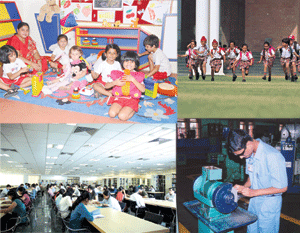 For the twice-born, much envied students of India’s seven showpiece Indian Institutes of Management (IIMs), this is not a season of comfort and joy. The impact of the global economic meltdown which is washing up on Indian shores, has taken the fizz out of the usually festive annual campus recruitment jamboree (March-April) of the IIMs.
For the twice-born, much envied students of India’s seven showpiece Indian Institutes of Management (IIMs), this is not a season of comfort and joy. The impact of the global economic meltdown which is washing up on Indian shores, has taken the fizz out of the usually festive annual campus recruitment jamboree (March-April) of the IIMs.
This year genuflecting representatives of top multinational companies, who hitherto vied to entice smug young postgraduates — the overwhelming majority of them with no hands-on business experience — with jaw dropping remuneration packages, were missing in action. For instance, in IIM-Ahmedabad, the thinly attended campus recruitment process was extended to nine days, making it the most prolonged process of the past five years. Moreover average domestic and international salaries offered to IIM-A’s graduating batch of 2009 at Rs.12.17 lakh and Rs.41.5 lakh per year, were 30 percent lower than last year’s. The picture at the other six IIMs was marginally worse.
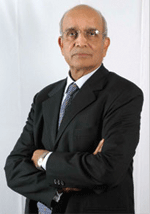 Plunging start-up salaries of the batch of 2009 is not the only cause of long faces on the verdant and sprawling 100 acres-plus campuses of India’s globally renowned IIMs, which annually admit the brightest and best 1,800 of 250,000 hopeful graduates who write their rigorous Common Admission Test (CAT) held in 23 cities countrywide. Another cause of the pall of gloom, which has descended upon the country’s premier (Central government promoted) B-schools, is the report of a four-member IIM Review Committee (IRC), constituted by the Union government and chaired by R.C. Bhargava, former managing director and incumbent chairman of Maruti Suzuki Ltd. Submitted to the Union ministry of human resource development last September and made public recently, the report has made several recommendations which if accepted, will tighten the grip of the ministry and Central government over the IIMs, which despite their government pedigree, have enjoyed considerable autonomy for the past half century.
Plunging start-up salaries of the batch of 2009 is not the only cause of long faces on the verdant and sprawling 100 acres-plus campuses of India’s globally renowned IIMs, which annually admit the brightest and best 1,800 of 250,000 hopeful graduates who write their rigorous Common Admission Test (CAT) held in 23 cities countrywide. Another cause of the pall of gloom, which has descended upon the country’s premier (Central government promoted) B-schools, is the report of a four-member IIM Review Committee (IRC), constituted by the Union government and chaired by R.C. Bhargava, former managing director and incumbent chairman of Maruti Suzuki Ltd. Submitted to the Union ministry of human resource development last September and made public recently, the report has made several recommendations which if accepted, will tighten the grip of the ministry and Central government over the IIMs, which despite their government pedigree, have enjoyed considerable autonomy for the past half century.
The committee whose members comprised Ajit Balakrishnan, chief executive of Rediff.com and chairman of IIM-Calcutta’s board of governors; Anusua Basu, retired deputy comptroller accountant general of India; Ram S. Tarneja, former managing director of Bennett, Coleman & Co (publisher of the Times of India), and Ashok Thakur, additional secretary, department of higher education, Union HRD ministry, makes a strong case for greater Central government supervision of the IIMs, baldly stating that the “IIMs cannot expect to become fully independent of government”.
Therefore to “assist the government in playing its role”, to help IIMs transform from teaching institutions into “thought leadership centres”, IRC’s major recommendation is the establishment of a Pan-IIM Board (PIB) with supervisory jurisdiction over all IIMs countrywide. “While recognising the limitations of the government in directly contributing to the management of IIMs, or even effectively guiding them and monitoring performance, it is obvious that the government cannot adopt a totally hands-off policy and delegate all powers to the IIM boards. The IIMs have been largely funded with public money and will continue to receive public funds in the future. Parliament and people at large have a right to know how well these funds are being spent, and if the IIMs are working in the public interest. At present there is no institutionalised system of government having access to advice from a body of persons who have the necessary expertise and global experience of building and being involved in the management of institutions of excellence. We believe that government will be better able to discharge its public responsibilities if it acts on the advice of a body of such persons… Accordingly, we recommend the creation of a Pan-IIM Board,” says the report.
The IRC recommends that the PIB should be made up of 15 members, five of whom would be Central government nominees, and the rest eminent and successful individuals living in India and abroad. The chairman will be nominated by the prime minister, and the secretary of the board should be one of the five government nominees. Though it warns PIB from getting involved in micro-management, the committee’s report recommends that the board be vested with the power to approve the vision and mission statements of each IIM; set policy framing guidelines; approve their two-year business plans, as also review the performance of each IIM bi-annually and advise the Central government on all matters relating to the IIMs.
The recommendations of the Bhargava Committee have come as a shock to the high-powered directors (hand picked and appointed by the Union cabinet) of the country’s seven IIMs, sequentially established in Ahmedabad, Bangalore, Kolkata, Lucknow, Indore, Kozhikode and Shillong, with no-expenses-spared at capital costs (unadjusted for inflation) of Rs.100-300 crore, and churning out 1,800 high quality, globally accepted business management graduates annually. Directors and top-level academics of the seven sister IIMs are dismayed and bewildered by the Bhargava Committee’s recommend-ations, because it reverses the verdict of several hard-won battles the IIM managements have fought for operational and financial autonomy during the past decade.
In this connection it’s pertinent to recall that the imperious Dr. Murli Manohar Joshi, Union HRD minister in the BJP-led NDA government (1999-2004), had issued an order arbitrarily slashing the already heavily subsidised annual tuition-cum-residence fees of the IIMs (Rs.2.5-6.5 lakh currently) to a standard Rs.30,000 per year, while simultaneously imposing a cap on the corpus of each institute at a maximum Rs.25 crore. Fortunately this retrograde diktat — widely interpreted as government disapproval of the IIMs’ progress towards financial and operational autonomy — was rendered null and void when the BJP was bested by the Congress party in the general election of 2004.
Despite the change of government in New Delhi, which must have come as a huge relief to the top brass of the IIMs, they weren’t let alone to get on with their business of teaching and research by the new dispensation either. In 2006 Arjun Singh, Union HRD minister in the Congress-led UPA government — with an eye on the country’s massive 200 million Dalit vote bank — pushed legislation through Parliament decreeing that all Central government funded universities and institutions of higher education, including the IIMs and IITs, have to reserve an additional 27 percent (in addition to the 22.5 percent quota reserved for scheduled castes and tribes) for OBC (other backward classes/castes) students with effect from the academic year beginning 2008. Subsequently following a national outcry, the overall annual intake capacity of Centrally funded universities and institutions was expanded by 27 percent to leave the merit quota intact, imposing an additional teaching load on the faculties of these institutions.
Nor was that all. Shortly after the Central Educational Institutions (Reservations in Admission) Act, 2006 was pushed through Parliament, the septuagenarian HRD minister felt it incumbent upon him to insist upon OBC quota rules being applied to faculty recruitment and promotions in the IIMs and IITs. Only recently was this proposal given a burial following vociferous protests from the IIMs and IITs. But nothing loath, the ministry halted the IIMs’ inching progress towards operational and financial autonomy by setting up the Bhargava Committee.
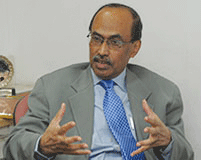 Little wonder IIMs A (Ahmedabad), B (Bangalore), C (Calcutta) — India’s oldest B-schools — furious with persistent efforts to control and command them, have publicly criticised the Bhargava Committee’s recommend-ations as regressive and damaging to the institutions’ quest for world class academic and operational excellence. “Recently, we submitted our report to the HRD ministry on the recommendations made by the R.C. Bhargava committee, arguing that no change in governance structure at the IIMs is required. The limitation is that if you split the board in two, one board that will set the strategy that is the Pan- IIM Board, and the other board which will implement the policy, then you are creating a dichotomy between those who will set the policies and those who will implement them. Now if the performance does not happen (sic), then who is to be held accountable? Presently, it’s a single board that sets the policies and it’s also accountable for performance, framing of policy and implementation. So, you can hold the board accountable for non-performance. If the board is split then accountability is not there,” Samir Barua, director of IIM-Ahmedabad told Outlook magazine (January 17).
Little wonder IIMs A (Ahmedabad), B (Bangalore), C (Calcutta) — India’s oldest B-schools — furious with persistent efforts to control and command them, have publicly criticised the Bhargava Committee’s recommend-ations as regressive and damaging to the institutions’ quest for world class academic and operational excellence. “Recently, we submitted our report to the HRD ministry on the recommendations made by the R.C. Bhargava committee, arguing that no change in governance structure at the IIMs is required. The limitation is that if you split the board in two, one board that will set the strategy that is the Pan- IIM Board, and the other board which will implement the policy, then you are creating a dichotomy between those who will set the policies and those who will implement them. Now if the performance does not happen (sic), then who is to be held accountable? Presently, it’s a single board that sets the policies and it’s also accountable for performance, framing of policy and implementation. So, you can hold the board accountable for non-performance. If the board is split then accountability is not there,” Samir Barua, director of IIM-Ahmedabad told Outlook magazine (January 17).
Likewise the IIM-Bangalore top brass has come out forcefully against the establishment of a PIB, which in effect will supersede the governing boards of the institutes. IIM-B’s 17-page response argues that the concentration of powers in a supra board will result in each IIM losing its individual identity, and transforming into a standardised institution lacking institutional character.
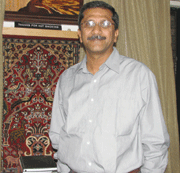 “Mr. Bhargava sees the seven IIMs as constituent regional colleges of something he calls brand IIM and wants to impose a centralised planning model from Delhi upon us. The Pan-IIM Board idea is the outcome of a planned effort to centralise the governance of IIMs. Self-evidently, it diminishes the autonomy of each IIM by creating an unnecessary layer of bureaucracy between the IIM governing boards and the Central government. Moreover the Bhargava Committee suggests that admissions should be centralised, and curricula, governance, processes and faculty incentives should be standardised. Academia is about diversity — diversity of thought and activities. The country’s IIMs are diverse organisations with differing aspirations defined by their own governing boards and faculty. If IIMs are to emerge as truly world-class institutions, they must be given the same academic, financial and institutional autonomy which the world’s top B-schools enjoy,” says Pankaj Chandra, an alumnus of the Benares Hindu University and Wharton School (USA), and director of IIM-Bangalore since 2007.
“Mr. Bhargava sees the seven IIMs as constituent regional colleges of something he calls brand IIM and wants to impose a centralised planning model from Delhi upon us. The Pan-IIM Board idea is the outcome of a planned effort to centralise the governance of IIMs. Self-evidently, it diminishes the autonomy of each IIM by creating an unnecessary layer of bureaucracy between the IIM governing boards and the Central government. Moreover the Bhargava Committee suggests that admissions should be centralised, and curricula, governance, processes and faculty incentives should be standardised. Academia is about diversity — diversity of thought and activities. The country’s IIMs are diverse organisations with differing aspirations defined by their own governing boards and faculty. If IIMs are to emerge as truly world-class institutions, they must be given the same academic, financial and institutional autonomy which the world’s top B-schools enjoy,” says Pankaj Chandra, an alumnus of the Benares Hindu University and Wharton School (USA), and director of IIM-Bangalore since 2007.
In particular, Chandra is outraged by the committee’s implicit endorsement of an earlier HRD ministry decision (January 11, 2006) denying IIM-B permission to establish an affiliated institution in Singapore. Coincidently the Bhargava Committee recommends that all IIMs should focus on developing business management education within the boundaries of the states in which they are sited. “IIMs are national institutions and our students are from around the country. Therefore this recommendation is puzzlingly parochial. With globalisation of the economy, the world’s best B-schools are establishing centres globally to prepare students for jobs worldwide. But the IRC restricts the globally renowned IIMs to expand regionally, not even nationally. This is a prescription for transforming the IIMs into third rate institutions,” says Chandra.
But Bhargava is unfazed by the volley of criticism which has greeted his proposals. In an interview with EducationWorld’s Delhi correspondent, Autar Nehru, he maintained that “the committee has done its best” and that the report was prepared after consultation with several top-rung academics and extensive research. “The IIM brand created 30 years ago, cannot be differently promoted by each institute. We have not commented at all on academic autonomy. On the contrary, we have recommended grant of full powers of management to the govern-ing boards to appoint contractual teachers, approve budgets, create teaching and administrative posts as against the present situation where these decisions require the approval of the HRD ministry. If and when these recommendations are implemented, the decision making capacity of the governing boards and the management of each institute will greatly increase,” says Bhargava. (see interview).
Although Bhargava — a former IAS bureaucrat who served for 26 years (1956-81) in various ministries of the Union and state governments including agriculture, animal husbandry, forests and energy and also in the public sector Bharat Heavy Electricals — may not know it, his report perhaps unconsciously reflects the command and control and government-knows-best culture of the IAS. A cursory reading of the IRC/Bhargava Committee’s 46-page report (see p.68) makes it manifest that the PIB will control, supervise and standardise the practices and processes of all IIMs. Thus notwithstanding each IIM being governed by powerful institutional boards, including five government nominees, if the Bhargava Committee’s report, which offers a road map to transform the IIMs into “thought leaders” or research-intensive institutions, is accepted, all IIMs will have to get their vision and mission statements and two-year business plans detailing salary and infrastructure expenditure, approved by PIB.
According to Bhargava the rationale of the PIB is that the Union HRD ministry, which has to supervise primary, secondary and tertiary education, doesn’t have sufficient time or expertise to administer the specialist needs of the IIMs. Referring to the boards of the institutes chaired by eminent industry leaders, the report states: “The IIM Boards, though generally headed by very eminent chairmen, have not been effective in formulating and implement-ing strategies which would lead to the growth of the IIMs, excellence in research and removal of constraints in the way of attracting and retaining good faculty… They have not been able to build better communications with their institutions and the government and overcome constraints to moving IIMs towards greater excellence,” says the report. Hence the need for the proposed PIB.
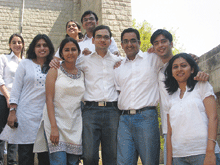 Undoubtedly there is some substance in Bhargava’s implicit criticism that despite huge public investment, even half a century after the first IIMs were promoted, they have not graduated from being mere teaching shops into centres of research excellence. Indeed if the IIMs have made any significant research studies on ways and means to improve the country’s collapsing utilities and infrastructure, it’s a closely guarded secret. Therefore several eminent academics including Prof. N.S. Ramaswamy — the founder director of NITIE, Jamnalal Bajaj Institute, Bombay and IIM-B — have been critical of the IIMs’ research and new knowledge creation capabilities.
Undoubtedly there is some substance in Bhargava’s implicit criticism that despite huge public investment, even half a century after the first IIMs were promoted, they have not graduated from being mere teaching shops into centres of research excellence. Indeed if the IIMs have made any significant research studies on ways and means to improve the country’s collapsing utilities and infrastructure, it’s a closely guarded secret. Therefore several eminent academics including Prof. N.S. Ramaswamy — the founder director of NITIE, Jamnalal Bajaj Institute, Bombay and IIM-B — have been critical of the IIMs’ research and new knowledge creation capabilities.
Yet while there is some substance in the Bhargava Committee’s assertion that none of the IIMs have matured into powerhouses of research and knowledge creation, it’s not clear how the imposition of a supervisory PIB will set this lacuna right. The simplest and most obvious solution would be to strengthen the extant IIM governing boards by giving them greater operational and financial autonomy to attract high quality faculty to research and create new knowledge, and for the HRD ministry to demand strict accountability from the governing boards. It’s arguable that imposition of the proposed PIB will impede, rather than facilitate the research and knowledge creation initiatives recommended by the committee.
However the biggest hurdle in the way of IIMs hiring high quality research-oriented faculty is the lack of operational and financial autonomy. Given their pathetic (Central government/HRD ministry) mandated pay scales, all seven IIMs are experiencing severe faculty shortages which will escalate with the expansion of student intake, following passage of the Central Educational Institutions (Reservations in Admission) Act 2006, which in effect has increased annual student intake by 27 percent. For instance, at IIM-Bangalore more than 32 faculty positions are vacant because an assistant professor (who must have a Ph D), has to make do with a salary of Rs.30,000 per month — not even a third of what an IIM student commands after graduation.
Addressing this crucial issue of augmenting faculty resources, the Bhargava Committee recommends that IIMs appoint additional faculty at market salaries on contractual terms, and make efficient use of online teaching-learning technologies. But for tenured professors the committee believes that IIM boards must adhere to “the basic salary structure notified by the government on the basis of Pay Commission reports”.
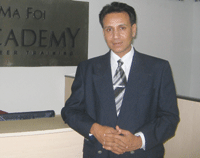 Nikhil Indrasenan, business head Mafoi Academy, the training division of the well-known head-hunting firm Mafoi Management Consultants, Chennai, says this is a good suggestion. “Flexibility is entering our workplaces and contractual employment is the norm across all industries. Hiring faculty on a contractual basis is a welcome recommendation and could prove to be a win-win situation for faculty, who can take up positions for a fixed period, and for the IIMs to attract talented and highly-qualified academics without incurring fixed long-term costs. However for a durable solution, the IIMs must attract a large number of doctoral students engaged in deep research and high quality, even if limited, teaching.”
Nikhil Indrasenan, business head Mafoi Academy, the training division of the well-known head-hunting firm Mafoi Management Consultants, Chennai, says this is a good suggestion. “Flexibility is entering our workplaces and contractual employment is the norm across all industries. Hiring faculty on a contractual basis is a welcome recommendation and could prove to be a win-win situation for faculty, who can take up positions for a fixed period, and for the IIMs to attract talented and highly-qualified academics without incurring fixed long-term costs. However for a durable solution, the IIMs must attract a large number of doctoral students engaged in deep research and high quality, even if limited, teaching.”
Though the Bhargava Committee suggests contractual appointments at market-determined compensation packages for recruiting additional faculty, in a classic instance of having its cake and eating it too, it stops short of giving IIM governing boards enabling financial autonomy, lest they raise tuition fees. Like most political leaders and bureaucrats of socialist era mindset, the committee doesn’t see the sheer irrationality of indiscriminate subsidisation of IIM students, who given their market value upon graduation, can easily avail long-term education loans.
“Like successive governments at the Centre, the Bhargava Committee is also suspicious that the IIMs will degenerate into profit making organisations if government control and supervision over tuition fees is relaxed. Such fear is wholly unwarranted. For students an IIM degree enhances their capability to earn and graduates command very high salaries. Hence charging market-determined tuition fees is perfectly rational. Instead of denying financial autonomy to the IIMs, the committee should have recommended targeted subsidies, scholarships, soft loans and fee waivers to be awarded by the governing boards of each IIM,” says Narayanan Ramaswamy, the Chennai-based executive director of KPMG Advisory Services Pvt Ltd.
In this connection it must be noted that a second review committee (set up after the first review committee (1981) chaired by business tycoon H.P. Nanda which recommended promotion of new IIMs at Lucknow and Kozhikode) under the chairmanship of the legendary Dr. Verghese Kurien, architect of India’s White (milk) Revolution and founder of the Institute of Rural Management, Anand (IRMA estb.1979), had proposed financial autonomy for the IIMs. The Kurien Committee (1992) recommended that the IIMs stop depending on government for annual operating expenses, and proposed creation of a corpus at each IIM, with the government contributing five years operating expenses to start their corpuses.
Surprisingly, the Union government accepted this proposal to set the IIMs on the path of financial self-reliance. Consequently IIM-A, IIM-B and IIM-C have transformed into self-financing institutions, and haven’t accepted any government subsidy or grant for the past five years. Faculty salaries, infrastructure maintenance and building of new facilities are financed by money generated from corpus interest, student fees, executive development progra-mmes, faculty research and consultancy. However the newer IIMs at Lucknow, Indore, Khozikode and Shillong continue to receive government support.
Nevertheless under the NDA regime, the HRD ministry imposed several riders on usage of corpus funds. Thus corpus fund accumulation is capped at Rs.50 crore; only the interest on corpus funds can be used without government permission; and balance funds in excess of Rs.50 crore can be used solely for infrastructure development. In its report, the Bhargava Committee has recommended retaining the cap on the corpus fund at Rs.50 crore, though it has allowed IIMs to use the money generated over this cap for any purpose. Yet in an era when higher education institutions worldwide are pulling out all the stops including recruiting professional fund-raisers to build corpuses, limiting the corpus to Rs.50 crore has no rationale, except to clip the wings of IIMs. In sharp contrast, the Harvard Business School (the B-school which the Bhargava Committee cites as a role model in its report) has accumulated a corpus of $2 billion (Rs.10,000 crore).
 “Currently academic controls and low quality are synonymous with Indian education. The first requirements of a self-respecting academic institution are freedom and accountability. Freedom, accountability and consequent rewards if any, must be market driven. The Bhargava Committee’s report seems to be ignorant of these ground realities. The truth is that academics is a highly specialised area and academic institutions cannot be effectively run by government. The committee has referred to the governing structures of leading international B-schools such as Harvard Business School. But HBS is administered by an independent board of governors and has built a huge corpus. If the government wants the IIMs to achieve international eminence, it should expand rather than circumscribe their autonomy as the Bhargava Report has recomme-nded. Especially since the IIMs have demonstrated their domain excellence,” says Dr. M.L. Shrikant, the Harvard, Cornell and Illinois universities educated honorary dean of S.P. Jain Institute of Management and Research, Mumbai.
“Currently academic controls and low quality are synonymous with Indian education. The first requirements of a self-respecting academic institution are freedom and accountability. Freedom, accountability and consequent rewards if any, must be market driven. The Bhargava Committee’s report seems to be ignorant of these ground realities. The truth is that academics is a highly specialised area and academic institutions cannot be effectively run by government. The committee has referred to the governing structures of leading international B-schools such as Harvard Business School. But HBS is administered by an independent board of governors and has built a huge corpus. If the government wants the IIMs to achieve international eminence, it should expand rather than circumscribe their autonomy as the Bhargava Report has recomme-nded. Especially since the IIMs have demonstrated their domain excellence,” says Dr. M.L. Shrikant, the Harvard, Cornell and Illinois universities educated honorary dean of S.P. Jain Institute of Management and Research, Mumbai.
Meanwhile with the Central government planning the promotion of six new IIMs in the Eleventh Plan Period (2007-12), the recommendations made by the IIM Review Committee assume great significance. All the committee’s recommendations relating to faculty upgradation, capacity expansion, principles of fee determination and governance, will also apply to the new institutes which will have less freedom to develop their distinctive cultures and identities.
 Though it’s indisputable that the IIMs, lulled into complacency by the massive annual scrambles for admission and recruitment, uncritical industry and media adulation, need to re-invent themselves to emerge as deep research and knowledge creation institutes, incremental government control and supervision is the worst prescription. The pathetic condition of India’s obsolete government arts, science and commerce colleges and universities is testimony to the inevitable outcome of government control and management.
Though it’s indisputable that the IIMs, lulled into complacency by the massive annual scrambles for admission and recruitment, uncritical industry and media adulation, need to re-invent themselves to emerge as deep research and knowledge creation institutes, incremental government control and supervision is the worst prescription. The pathetic condition of India’s obsolete government arts, science and commerce colleges and universities is testimony to the inevitable outcome of government control and management.
To their credit the IIMs, despite their government pedigree, have wrested sufficient academic autonomy to emerge as nationally and even globally respected B-schools. Therefore they need greater — rather than lesser — academic, financial and operational autonomy to flower into centres of teaching and research excellence. Encouragingly, a high-level committee headed by respected educationist Prof. Yashpal, in an interim report submitted to the HRD ministry in mid March, has recommended that the IIMs should be converted “into full-fledged universities so that they act as pace-setters and models for all government institutions of higher education”.
Regrettably driven by traditional control and command impulses, the Bhargava Committee has missed a great opportunity to write a new freedom charter which would have enabled each IIM to build its own institutional personality and development agenda, to rise to the next level to compete inter se and with the best B-schools worldwide. It has failed to appreciate that academic excellence and knowledge creation is the outcome of diversity rather than conformity and standardisation.
Nevertheless on the credit side, the Bhargava committee has beamed a timely searchlight on the nation’s elite B-schools, exposing their unwarranted complacency and shallow research culture. Against the backdrop of plummeting job offers for IIM graduates, faculty shortages and increased competition from private sector B-schools, directors and faculty of the magnificient seven IIMs need to devise new strategies to rejuvenate and upgrade their institutes.
The best that can be said about the Bhargava Committee’s report is that hopefully it will inspire IIM directors and managers to look deep within, and transform these institutes into excellent centres of teaching, research and knowledge creation, to enable India’s once-great government and corporate institutions to meet the challenges and changing dynamics of the new global economy.
With Autar Nehru (Delhi); Hemalatha Raghupathi (Chennai) & Harshikaa Udasi (Mumbai)